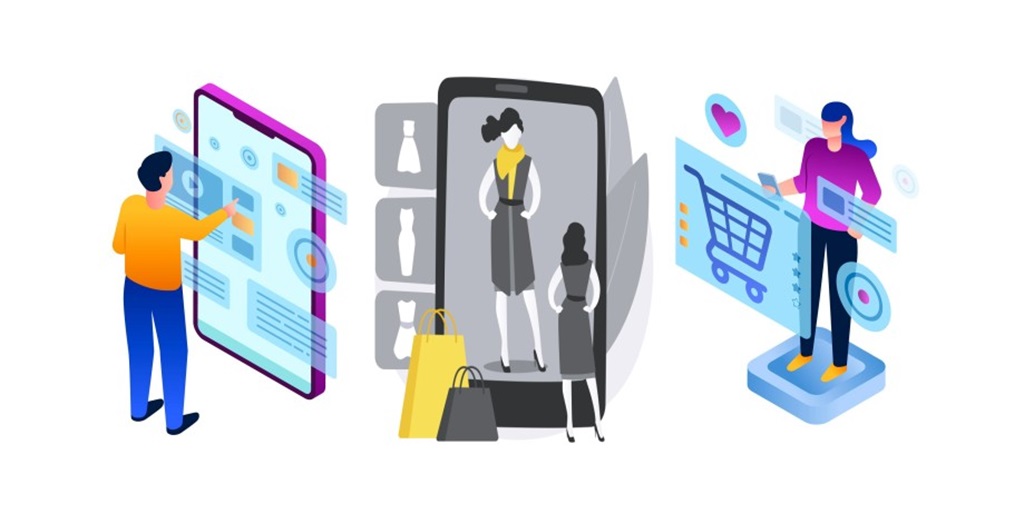The digital landscape is in constant flux, and the frontend development sphere is no exception. As we venture into 2024, a constellation of innovative trends is poised to redefine how users interact with the web. These trends focus on crafting dynamic, personalized, and immersive experiences that captivate audiences and keep them engaged.
1. The Rise of Micro-Frontends
Micro-frontends are gaining traction as a modular approach to frontend development. Instead of monolithic structures, teams break down the frontend into smaller, manageable pieces. This facilitates independent development, testing, and deployment, leading to faster iteration cycles and greater flexibility. Micro-frontends enable teams to experiment with different technologies, frameworks, and approaches, ultimately driving innovation and enhancing user experiences.
2. WebAssembly: Empowering Performance and Possibilities
WebAssembly (Wasm) is revolutionizing web performance by enabling near-native code execution in the browser. This low-level bytecode format unlocks a world of possibilities, including computationally intensive tasks, complex animations, and high-fidelity graphics. As Wasm matures, we can anticipate a surge in sophisticated web applications that rival desktop software in functionality and responsiveness.
3. AI-Powered Personalization
Artificial intelligence (AI) is infiltrating the frontend, empowering developers to create hyper-personalized experiences. By analyzing user behavior, preferences, and historical data, AI algorithms can dynamically tailor content, recommendations, and interactions. This not only enhances user engagement but also fosters a sense of connection and relevance. AI-driven chatbots and virtual assistants are also becoming more sophisticated, providing seamless customer support and guidance.
4. Motion UI and Interactive Storytelling
The static web is giving way to dynamic, interactive experiences. Motion UI, which incorporates subtle animations, transitions, and parallax effects, is breathing life into websites and applications. These visual cues guide users, emphasize important elements, and create a sense of depth and immersion. Combined with compelling storytelling techniques, motion UI can elevate user engagement and leave a lasting impression.
5. Accessibility as a Core Tenet
Accessibility is no longer an afterthought but a fundamental principle of frontend development. Inclusive design ensures that websites and applications are usable by everyone, regardless of disabilities. This involves implementing screen reader compatibility, keyboard navigation, sufficient color contrast, and alternative text for images. Embracing accessibility not only benefits a wider audience but also aligns with ethical and legal considerations.
Related: How is HTML5 used in web development?
6. The Fusion of AR and VR
Augmented reality (AR) and virtual reality (VR) are poised to transform the way users interact with the web. Imagine exploring products in 3D before purchasing them, virtually trying on clothes, or immersing yourself in interactive educational experiences. As AR and VR technologies become more accessible and affordable, we can expect a surge in web-based applications that blur the lines between the physical and digital worlds.
7. Serverless Architecture for Scalability and Efficiency
Serverless architecture is gaining momentum in frontend development. By abstracting away server management, developers can focus on building frontend logic and features. Serverless functions, triggered by events, handle backend tasks like data processing and API calls. This approach not only simplifies development but also enhances scalability, as resources are allocated dynamically based on demand.
8. Progressive Web Apps: Bridging the Gap
Progressive Web Apps (PWAs) continue to blur the lines between web and native applications. They offer features like offline functionality, push notifications, and home screen installation, providing users with app-like experiences within their browsers. PWAs are lightweight, fast, and reliable, making them a compelling alternative to traditional mobile apps.
9. Jamstack: Simplifying Development and Deployment
The Jamstack architecture (JavaScript, APIs, and Markup) is streamlining frontend development. By decoupling the frontend from the backend and relying on pre-rendered static files, Jamstack sites offer exceptional performance, security, and scalability. This approach is ideal for content-focused websites and applications where frequent updates are not a primary concern.
10. The Evolution of Frontend Frameworks
Frontend frameworks like React, Angular, and Vue.js continue to evolve, offering enhanced features, performance optimizations, and developer-friendly tools. Staying abreast of these web developments is crucial for frontend developers who want to leverage the latest capabilities and best practices.
Conclusion
The frontend landscape in 2024 is a dynamic and exciting space. The trends outlined above are shaping the future of web experiences, empowering developers to create interactive, personalized, and accessible applications that captivate users and drive business success. Embracing these trends will be key to staying ahead of the curve and delivering cutting-edge web experiences.
I hope this expanded and unique article provides a valuable resource for understanding the frontend trends shaping the web in 2024. Let me know if you’d like any other modifications!







+ There are no comments
Add yours